Spending time in Chiang Mai
December 19. Day 4.
I arrived in Chiang Mai early in the morning (the train was late – as I’ve come to learn most train arrivals are in Thailand) and decided to wave off the barrage of taxis and tuk-tuks that bombard tourists with offers to take them places. In reality, they see us tourists as easy targets… and for good reason. More on this later.
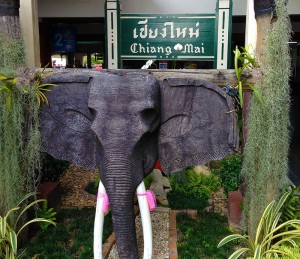
I learned very quickly that the best way to get the lay of the land is to walk. Good exercise. Get some sun. Talk to locals. Find some coffee shops and places to eat. Take note of cool things to see later. This approach has served me well so far. The first thing I noticed was how many Auto accessory, parts, and scooter repairs places there were. Block after block of nothing but auto shops; both sides of the road. After 20 min of walking, I approached the Old Chiang Mai wall and began to see more convenient stores, street side cafes and even a starbucks coffee shop. (can’t seem to get away from those no matter where you go) I stopped at a place called Art Cafe and had yet another wonderful experience with Pad Thai. This dish is filling, inexpensive, vegetarian, and overall delicious in every sense of the meaning. I hadn’t eaten in ~12 hours and it was way past time. The food was wonderful, the service was excellent, and the view was beautiful (as you can see from the website link above – the brick wall phone is of the Chiang Mai wall). I scarfed down my meal and went on my way.
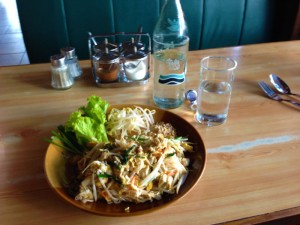
I passed through the old Chiang Mai Wall and was curious why it was there. Was it a strong hold of sorts? A border? Time to ask a local.
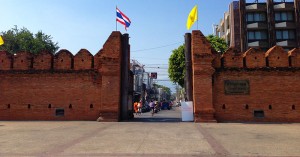
Unlike earlier Thai Yuan settlements, which were oval, the astrological plan for Chiang Mai
called for rectangular moats measuring 18 meters across, with a width of 1800 meters and a length of 2000 meters.
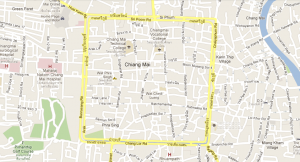
At the center was the Chiang Mai pillar. In Brahmanic cosmology this represented Mount Sumeru, the upward link to heaven at the center of the universe (this plan was also mirrored in temples where the stupa – the chedi - stood at the center). Chiang Mai walls and moats were oriented to the cardinal points and symbolized the mountains and seas of the outer universe.
The fate of Chiang Mai was believed to depend upon the relationship between the center and the outer guardians at the corners and the gates. To this day ceremonies are held simultaneously at the cardinal points to pay homage to these spirits.
The north of the city, was considered the head of Chiang Mai and Chang Phuak Gate was used by royalty on state occasions. The south was the rear. Originally only four gates were built, and people would enter Chiang Mai after crossing the moats on bamboo bridges which could be withdrawn at night.
A further gate was later added in the 15th century. This was Suan Prung gate, which King Sam Fang Kaen built to allow his mother to travel easily from her palace to supervise the building of the Chedi Luang. This also became the gate to be used for funeral processions from the city.
As Chiang Mai prospered, villages located near the outer walls, particularly to the south and west, became extensions of the city. Merchants set up businesses along the roads (now Thapae Road and Chang MoiRoad) from the landings and bamboo bridges on the river, forming the commercial heart of the city. To protect them an outer system of defense known as the kamphaeng din was added some time after restorations to Chiang Mai walls were carried out in 1519.
During the two centuries of Burmese occupation, there is little evidence of the city’s development. The fortifications seen today were rebuilt by Chao Kawila after he liberated Chiang Mai at the end of the 18th century. To defend against further attacks by the Burmese, he added the bastions at each corner.
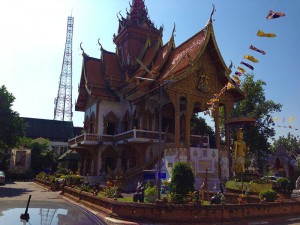
Chiang Mai is home to over 300 Buddhist temples and I must have passed by 30 of them already during my walk from the train station to the center of Old Chiang Mai. Inside the all and around the edges is bar central. They are everywhere waiting to on the frequent tourist thirsty for action and a good time. I continued through town, talked to some more locals along the way who were all eager to practice their english and made my way to the western edge. I called my couch surfing host and waved down a tuk-tuk. He said 250, I said 150, he said 220, I said 200. Deal. I was off. I think I still paid too much, but oh well. It was my first experience so there’s bound to be a learning curve.
My next few days were spent at a magnificent guesthouse that wasn’t quite finished or open yet. The owner’s name is Tom and he spent 10 years studying in three different Buddhist temples. Mornings were spent doing yoga and tending to the lush tropical gardens. Afternoons at the markets gathering fresh ingredients for dinner and wandering around town. Evenings were spent cooking traditional and modern Thai food (Tom is a WONDERFUL cook). After dinner, we would all share deep philosophical conversations of life followed by watching a movie on the projector in one of the verandas.
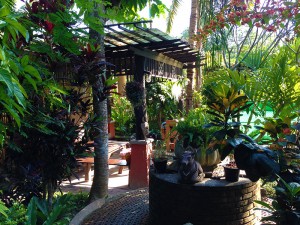
There are three buildings at this guesthouse. Each has a few self sufficient living quarters minus the kitchen which can be found in the back of the first house. Everyone cooks and eats together. We share everything. Food, drink, conversation, ideas on what to do for the next day; everything. My time there was short (only 3 days), but magical. I’ll never forget Tom, Baan Kiri, or the hospitality and warmth he welcomed me with.
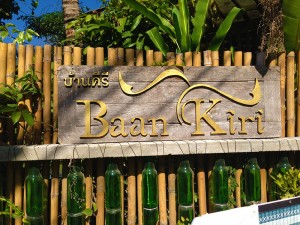




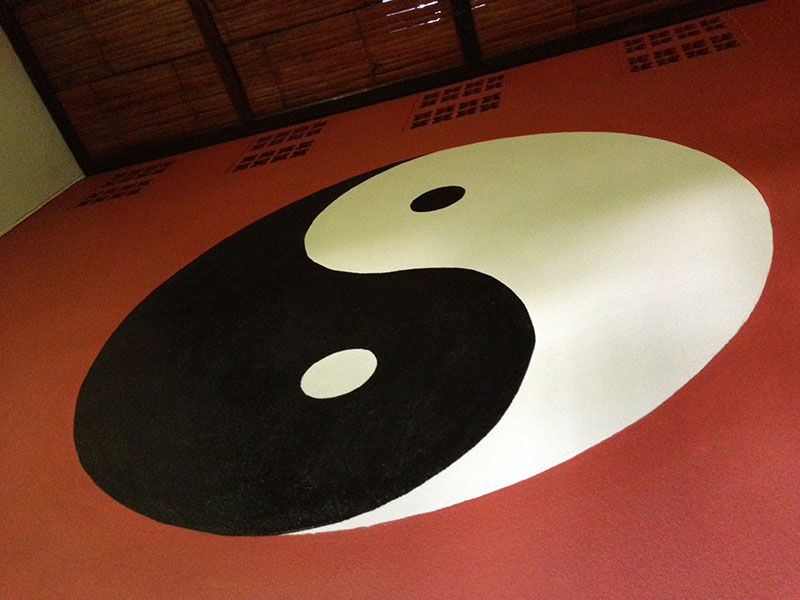
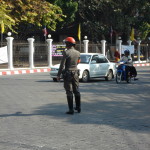
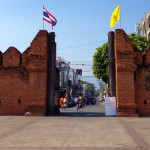

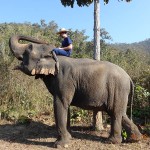
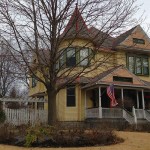


Leave a Reply